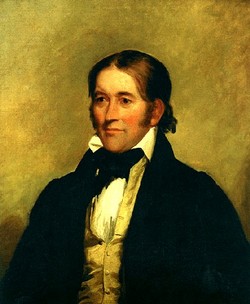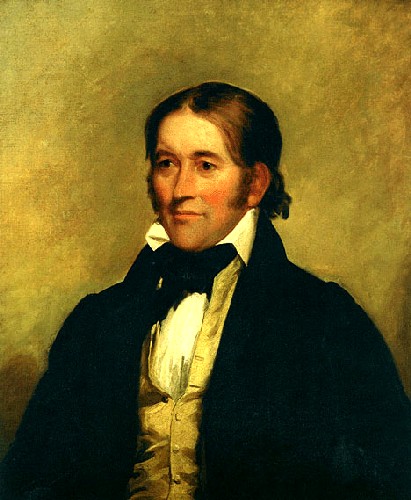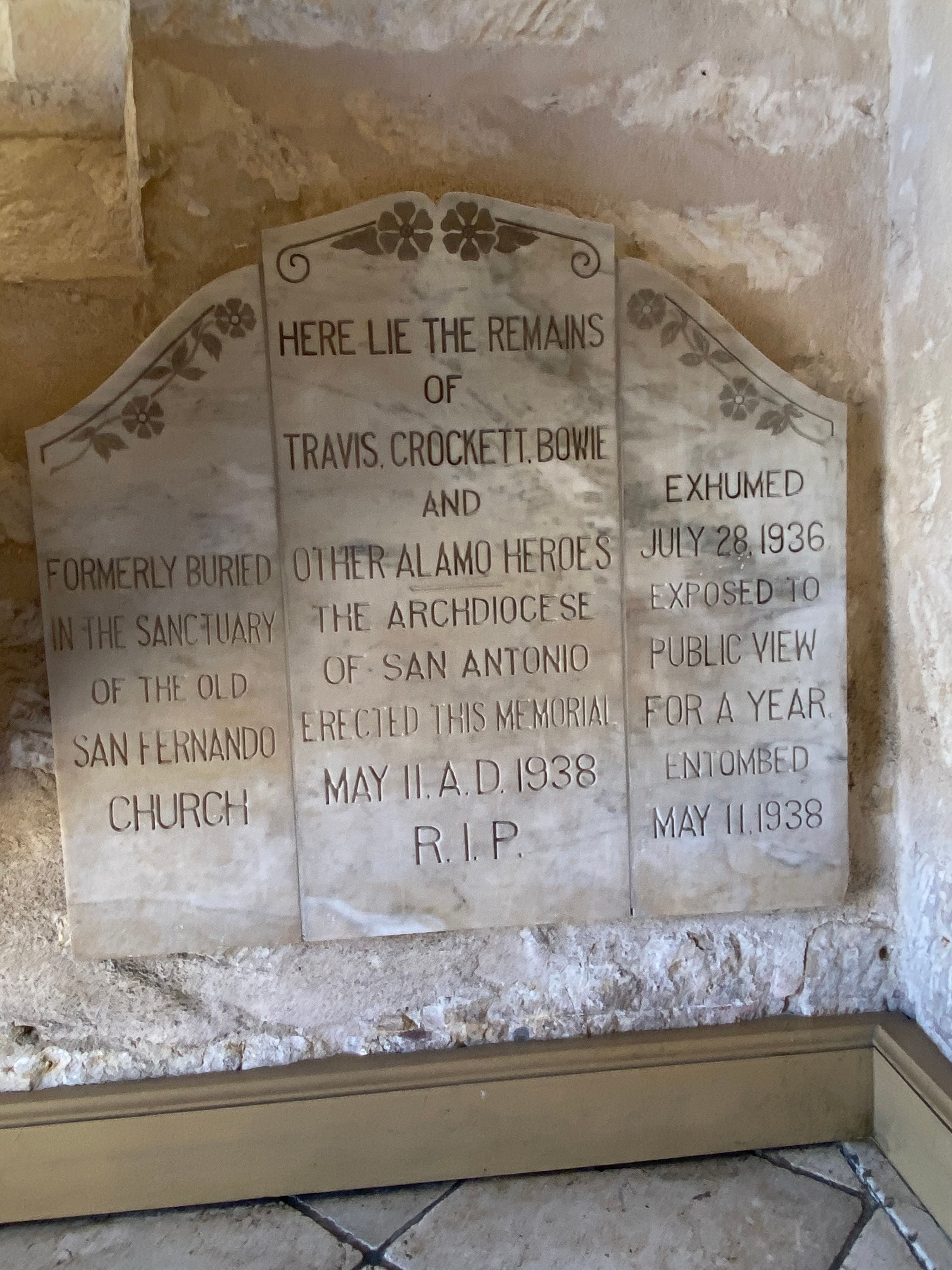Frontiersman, United States Congressman, Folk Figure. Born the son of Rebecca Hawkins and John Wesley Crockett in eastern Tennessee, the fifth of nine children. He had little formal education, only a few weeks beginning at age 13. Then a conflict with another student effectively ended his school career, and he ran away. He left Tennessee with cattle drovers and spent the next two and a half years working as a teamster. He returned home in 1802. In 1806, he wed Mary "Polly" Finely with whom he had three children. An attempt at farming proved unrewarding, and in 1813, he moved his family to Franklin County, Tennessee. He tried farming, coopering, manufacturing gunpowder, but he found success as a professional hunter, spending his early life hunting black bears and selling their pelts, meat, and oil for profit. After a Creek Indian attack on Fort Mims, Alabama, in 1813, he joined the state militia to fight the Red Sticks faction of the Creeks; he spent most of the Creek War as a scout and game hunter. When his wife died in 1815, he married the widow, Elizabeth Patton, who had two children. The couple had three children together. In 1817, the family moved to Lawrence County, Tennessee, where he worked as a Justice of the Peace, and would later serve as County Commissioner. In 1818, he joined the local militia as a Lieutenant Colonel. In 1823, he was elected to the Tennessee Legislature, and, in 1826, the U.S. House of Representatives. He gained popular traction with his folksy persona, but his no-nonsense, frugal approach also earned him political enemies. He won a seat in the United States Senate in 1827, and was reelected in 1829. He took a stand against the President on several issues, including a fierce opposition to Jackson's Indian Removal Act. In 1831, when he ran for a third term as an anti-Jacksonian, he was defeated. In 1833, he regained his seat by a narrow margin. He published his autobiography the following year, "A Narrative of the Life of David Crockett of the State of Tennessee." A defeat in 1835 marked the end of his political career. The following year, he planned "to explore the Texas well," eventually departing with three other men in November 1835. By January 1836, he had joined the Texas Volunteers and arrived at the Alamo in early February. By February 23, the garrison was under siege by the Mexican Army. The siege ended on March 6, when the Mexicans attacked, leaving no enemy combatants alive. His precise fate is a matter of some debate, the most plausible being that he died in battle. The bodies of the defenders were burned by the victorious Mexican troops. The following year, the ashes were said to have been placed in a coffin and buried near the chapel; the exact site was not marked. A sarcophagus in the Cathedral of San Fernando, however, purports to hold the ashes said to have been exhumed in 1936.
Frontiersman, United States Congressman, Folk Figure. Born the son of Rebecca Hawkins and John Wesley Crockett in eastern Tennessee, the fifth of nine children. He had little formal education, only a few weeks beginning at age 13. Then a conflict with another student effectively ended his school career, and he ran away. He left Tennessee with cattle drovers and spent the next two and a half years working as a teamster. He returned home in 1802. In 1806, he wed Mary "Polly" Finely with whom he had three children. An attempt at farming proved unrewarding, and in 1813, he moved his family to Franklin County, Tennessee. He tried farming, coopering, manufacturing gunpowder, but he found success as a professional hunter, spending his early life hunting black bears and selling their pelts, meat, and oil for profit. After a Creek Indian attack on Fort Mims, Alabama, in 1813, he joined the state militia to fight the Red Sticks faction of the Creeks; he spent most of the Creek War as a scout and game hunter. When his wife died in 1815, he married the widow, Elizabeth Patton, who had two children. The couple had three children together. In 1817, the family moved to Lawrence County, Tennessee, where he worked as a Justice of the Peace, and would later serve as County Commissioner. In 1818, he joined the local militia as a Lieutenant Colonel. In 1823, he was elected to the Tennessee Legislature, and, in 1826, the U.S. House of Representatives. He gained popular traction with his folksy persona, but his no-nonsense, frugal approach also earned him political enemies. He won a seat in the United States Senate in 1827, and was reelected in 1829. He took a stand against the President on several issues, including a fierce opposition to Jackson's Indian Removal Act. In 1831, when he ran for a third term as an anti-Jacksonian, he was defeated. In 1833, he regained his seat by a narrow margin. He published his autobiography the following year, "A Narrative of the Life of David Crockett of the State of Tennessee." A defeat in 1835 marked the end of his political career. The following year, he planned "to explore the Texas well," eventually departing with three other men in November 1835. By January 1836, he had joined the Texas Volunteers and arrived at the Alamo in early February. By February 23, the garrison was under siege by the Mexican Army. The siege ended on March 6, when the Mexicans attacked, leaving no enemy combatants alive. His precise fate is a matter of some debate, the most plausible being that he died in battle. The bodies of the defenders were burned by the victorious Mexican troops. The following year, the ashes were said to have been placed in a coffin and buried near the chapel; the exact site was not marked. A sarcophagus in the Cathedral of San Fernando, however, purports to hold the ashes said to have been exhumed in 1936.
Bio by: Iola
Inscription
“Here Lie the Remains of Travis, Crockett, Bowie and Other Alamo Heroes Formerly buried in the sanctuary of the Old San Fernando Church. Exhumed July 28, 1936. Exposed to public view for a year. Entombed May 11, 1938 The Archdiocese of San Antonio erected this memorial May 11 A.D. 1938 R.I.P”
Family Members
Advertisement
See more Crockett memorials in:
Records on Ancestry
Sponsored by Ancestry
Advertisement












